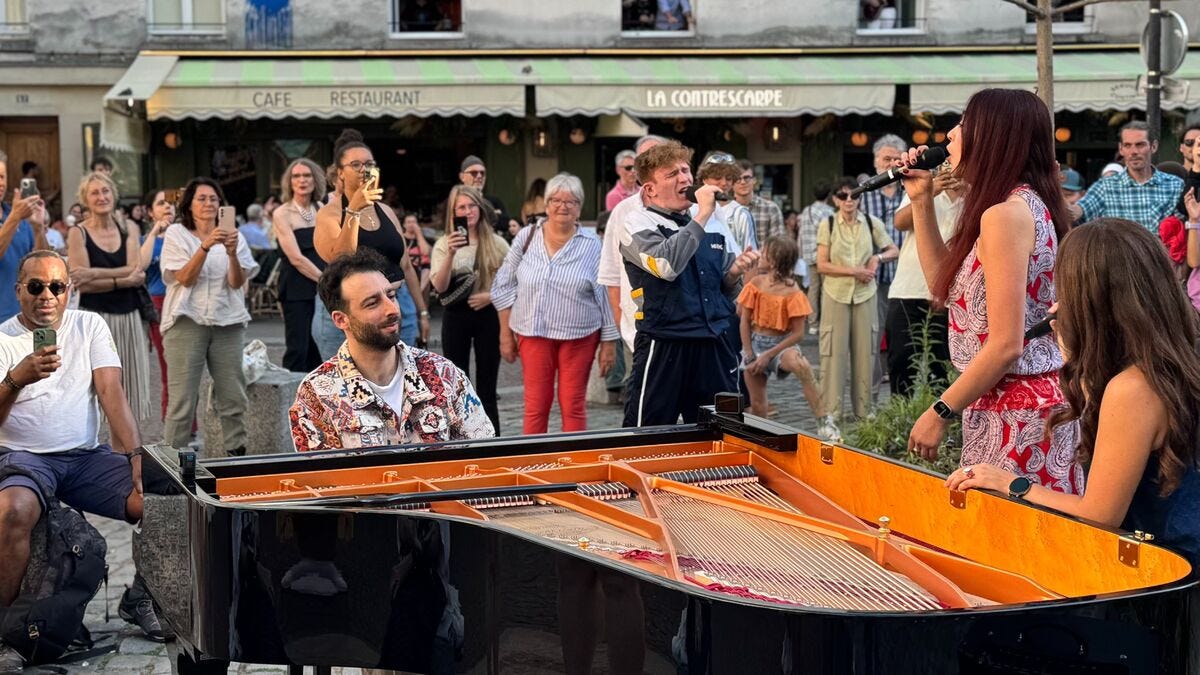When Queen released Bohemian Rhapsody in 1975, the six-minute track immediately stood out for its unconventional structure. Written by Freddie Mercury, it blends ballad, opera, and hard rock, breaking away from traditional pop song formats. Initially considered too long and unusual for radio, the single nevertheless became a global hit and has since grown into one of the most recognizable rock anthems of all time. Its mix of theatricality and raw energy continues to attract new generations of listeners, inspiring everything from cover versions to full-scale tributes.

Nearly 50 years later, the song remains a cultural touchstone—and its latest revival has come in the form of a viral flash mob in Paris. Pianist and content creator Julien Cohen organized the large-scale event at Place de la Contrescarpe, featuring 30 musicians, including singer Mickey Callisto and young guitarist Olly Pearson. The performance was meant to honor the 50th anniversary of Queen’s classic, and the video quickly spread across social media, surpassing 500 million views.
The spectacle was ambitious. Callisto entered dramatically on a horse and carriage, while 20 opera singers stationed in surrounding buildings echoed the song’s famous operatic middle section. The production required over a year of planning, according to Cohen. For many, the performance felt like a celebratory moment, bringing Queen’s music to the streets in a way that captured the attention of both passersby and millions of online viewers.
However, as the video’s popularity grew, so did skepticism. Some viewers praised the spectacle as joyful and creative, while others questioned whether the performance was genuinely live. Critics pointed to the highly polished sound, with harmonies that seemed more like studio recordings than raw street performance. Observers also noted that the audience reactions appeared carefully staged, raising the possibility that the flash mob was closer to a music video shoot than an unplanned gathering.
Comments from viewers reflected these doubts. Some dismissed the event as “flash mob plus studio trickery,” suggesting it blurred the line between authentic live music and post-produced content. Others noted technical details, such as slight pitch corrections and the piano’s tuning, as signs of studio involvement. At the same time, defenders argued that the spirit of the piece mattered more than the method. Even if elements were produced, the result still paid tribute to Queen’s artistry and brought joy to millions.

Cohen himself addressed the criticism directly. He stressed that the project took enormous coordination and that the intention was never to mislead but to create a striking piece of public art. “Bohemian Rhapsody is one of the few pop songs almost everyone knows,” he said, explaining that the aim was to share a unifying musical experience. The official Queen account even acknowledged the performance, writing, “We absolutely love this.”

Whether seen as a genuine live moment or a polished multimedia project, the Paris flash mob illustrates how Bohemian Rhapsody continues to resonate nearly half a century after its release. Cohen’s ambitious staging may not fit neatly into the traditional idea of a flash mob, but it underscores the enduring power of Queen’s music to inspire large-scale creativity and global conversation.





